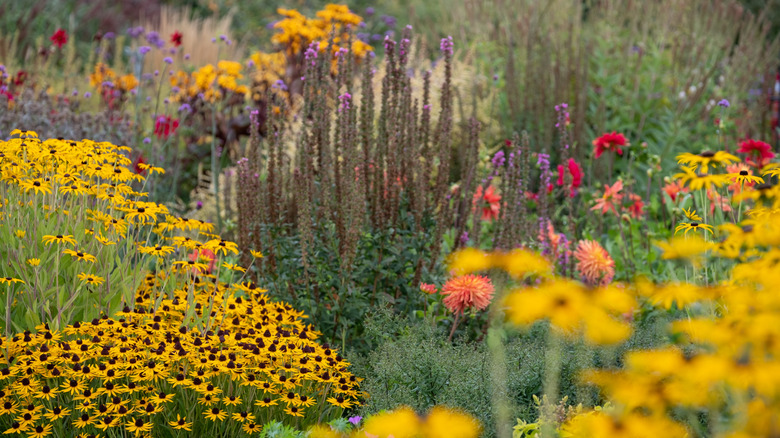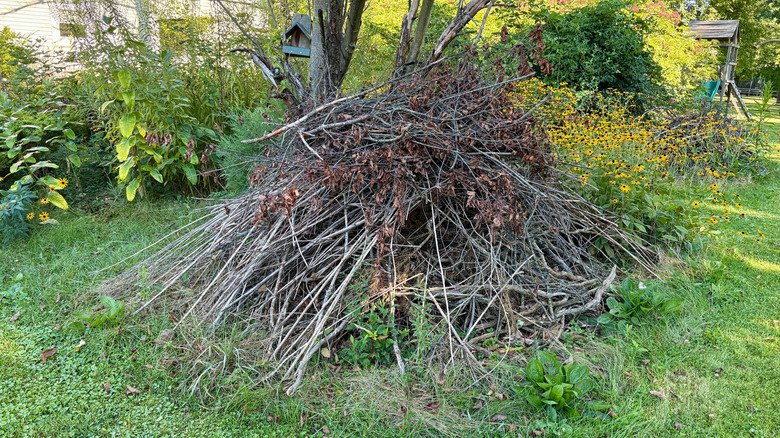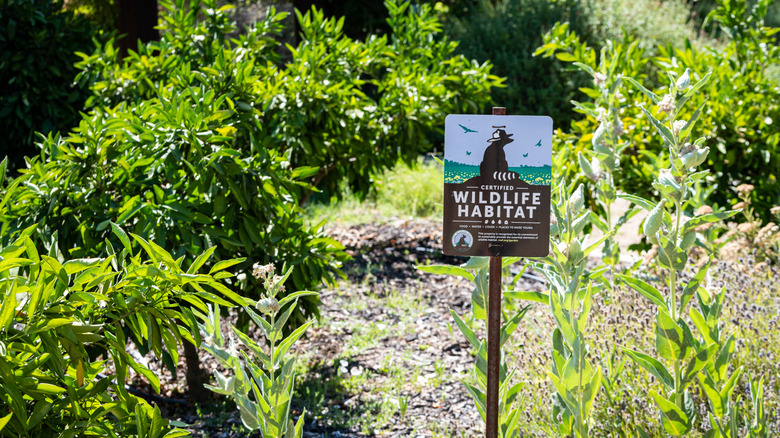How To Turn Your Garden Into A Certified Wildlife Habitat (And Why You'd Want To)
As more and more gardeners turn their yards into spaces for attracting pollinators and other wildlife, expansive green lawns are butting up against mini meadows where birds flit among coneflowers, goldenrod, and asters. While the bees and butterflies no doubt prefer having more food and shelter, homeowners in the grassy lawn camp may get their feathers ruffled at the sight of all those wildflowers. When pollinator-friendly gardeners opt for a certified wildlife habitat certification through the National Wildlife Federation (NWF), they may be able to appease concerned neighbors, in addition to getting validation for their landscaping choices. These are all good and valid reasons why you might want to apply for certification.
Qualifying for this type of certification will be easy for those who have long been hard at work taking sustainable actions in their gardens. Whether the motivation is neighborly approval or self-validation, gardeners who have already started turning their yards and gardens into nature-friendly sanctuaries can qualify for a certified wildlife habitat simply by verifying that their gardens contain enough specific features to sustain wildlife. The certification requires that gardeners include wildlife-friendly plants of the type you would grow for a biodiverse garden, as well as other types of wildlife benefits, such as shelter and water.
Grow wildlife-friendly native plants and provide shelter and water to certify your property
To qualify as a certified wildlife habitat, there are several benefits that must be provided for insects, birds, or other animals, starting with at least three sources of food. Native plants, such as those that produce seedheads, nuts, or cones, and ones that bear fruits or berries, all count as good options for food. At least one source of water must be available, and while streams or ponds are valid options, gardeners can also choose from bird baths or bee puddlers.
In addition to food and water, two sources of cover for wildlife and two places where wild animals can raise their young are needed to qualify as this type of nature sanctuary. One feature that can help you certify your garden is a brush pile for attracting wildlife. Wild creatures can turn mature trees, fallen logs, groundcovers, and dense shrubs into shelter, so all of these count as qualifying elements in the yard.
You also need at least two types of sustainable gardening practices to qualify, such as eliminating pesticide use and incorporating a rain garden into the yard. Once you have verified that your yard contains enough qualifying elements that are beneficial to wildlife, the NWF requires a small application fee. Signage for identifying your garden as a certified wildlife habitat can be purchased at an additional cost, with three options available, including a lightweight metal garden sign, a more substantial plaque, or a lawn flag.
Adding a certified wildlife habitat sign should keep neighbors happy
Signage can serve as a cue to care that explains the intention of your certified wildlife habitat to your neighbors. This simple type of cue can go a long way toward helping turn the dubious into allies or admirers. Your grass-growing neighbor may not know how to tell a native wildflower from a weed, so a sign offers a quick explanation that your yard is an intentional space designed to benefit pollinators and other wildlife — rather than a neglected lot where weeds abound.
Although having a sign in the front of your yard may offer a sense of satisfaction for your nature-friendly gardening efforts, it may not be enough to garner positive attitudes about a yard with no or less grassy lawn than your neighbors. You should also plan on adopting additional cues to care for your certified wildlife habitat, such as using an aesthetically pleasing design and creating borders to help things look tidy. And since your homeowners association could affect what you can do in your yard, you'll also have to make sure that your wildlife habitat respects the ordinances of your HOA to avoid creating hassles for yourself. After all, you'll benefit even more bees, butterflies, and birds if your garden looks so gorgeous that you turn your neighbors into converts instead of complainers.


